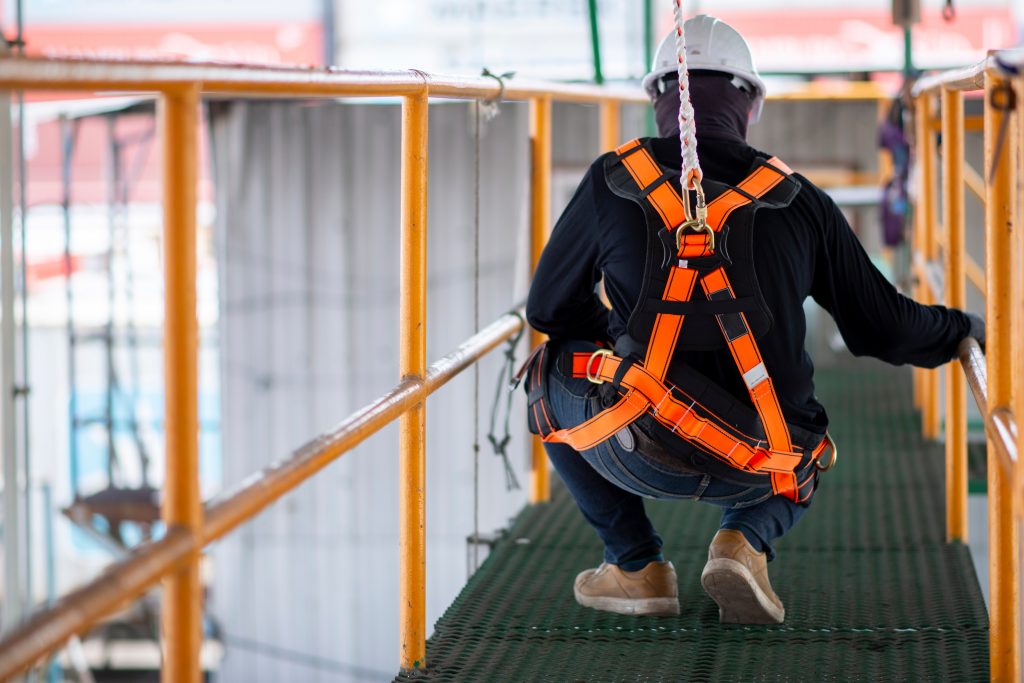Are you familiar with the concept of working at heights and the fact that proper training is required if you are working at any above-normal elevation?
If not, then this page is for you. Working at heights training is a crucial component of workplace safety, particularly in industries where employees are required to operate at elevated levels. This training equips individuals with the knowledge and skills to identify and mitigate potential hazards, as well as adhere to safety regulations and legislation.
We shall explore the significance of working at heights training, the topics covered in such courses, the different types available, and the benefits of attending. So, let’s dive in and discover the world of working at heights training courses.
Key Takeaways:
- Proper working at heights training is crucial for ensuring safety and reducing accidents in the workplace in Southern Ontario.
- Topics covered may include safety regulations, hazard identification, fall prevention, use of PPE, and emergency procedures.
- Attending a working at heights training course can benefit workers by improving safety, increasing knowledge and skills, and meeting legal requirements.
What Is Working At Heights Training Course?
Working at Heights Training Course provides essential knowledge and skills required for working safely at elevated locations, in compliance with the legal requirements set by the Ontario Ministry of Labour in Southern Ontario, including Brantford, Cambridge, and Hamilton.
This training is crucial not only for the safety of workers but also for employers to adhere to the stringent regulations laid out in the Occupational Health and Safety Act and Construction Regulation.
By successfully completing this course, individuals gain a deep understanding of hazards associated with working at heights, control measures, and proper use of fall protection equipment. It equips them with the skills to assess risks, plan and execute safe work.
Brantford’s industrial sector, Cambridge’s construction industry, Hamilton’s infrastructure developments, and numerous other sectors in these areas benefit immensely from personnel trained in working safely at heights.
Why Is Working At Heights Training Course Important?
Working at Heights Training Course holds paramount importance due to its alignment with safety regulations, as mandated by the Chief Prevention Officer and the Regulations of the Occupational Health Safety Act.
The course plays a crucial role in imparting essential knowledge and skills to workers engaged in tasks at elevated locations. It equips them with the necessary competencies to identify and mitigate potential risks associated with working at heights, ensuring a safer work environment.
By adhering to the guidelines set forth by the Chief Prevention Officer and the Occupational Health Safety Act, organizations can demonstrate their commitment to worker safety and uphold legal mandates. The course helps in reducing the likelihood of falls and related injuries, ultimately contributing to a more secure and compliant work culture.
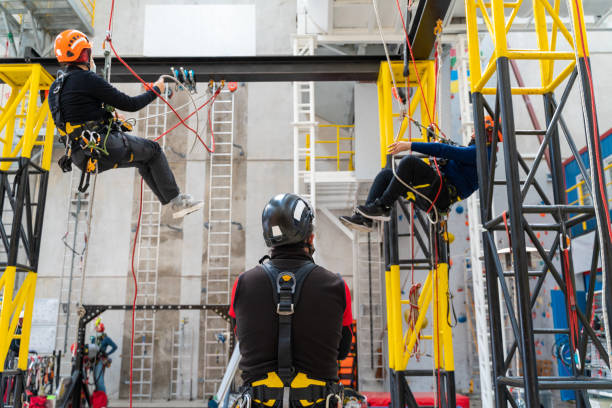
What Are The Topics Covered In A Working At Heights Training Course?
A comprehensive Working at Heights Training Course encompasses vital topics such as safety regulations compliance, hazard identification, fall prevention strategies, proper use of Personal Protective Equipment (PPE), and emergency procedures and rescue techniques.
These training courses are designed to ensure that individuals working at heights are equipped with the knowledge and skills necessary to prevent accidents and mitigate risks. The course usually begins with an overview of safety regulations concerning working at heights, emphasizing legal requirements and best practices to maintain a safe working environment.
Participants learn how to identify potential hazards commonly encountered when working at heights, including unstable structures, uneven surfaces, and adverse weather conditions. The curriculum also covers various fall prevention strategies, such as guardrails, safety nets, and personal fall arrest systems, along with proper anchorage techniques.
Students are educated on the importance of inspecting and maintaining equipment to ensure its effectiveness. The correct selection, use, and maintenance of Personal Protective Equipment (PPE) is thoroughly discussed. This includes harnesses, lanyards, helmets, and other gear required for working at heights.
Safety Regulations And Legislation
The Safety Regulations and Legislation component within the Working at Heights Training Course focuses on the mandates and guidelines outlined by the Ontario Ministry of Labour and related regulations to ensure compliance and workplace safety.
These safety regulations encompass a comprehensive understanding of the Occupational Health and Safety Act, Construction Projects Regulation, and fall protection measures. The course emphasizes the necessity of conducting thorough hazard assessments and implementing appropriate control measures to mitigate risks effectively.
It delves into the responsibilities of employers and workers, including the usage of personal protective equipment and safe work practices. Understanding these regulations is crucial in fostering a culture of safety and preventing workplace accidents.
Hazard Identification And Risk Assessment
The Hazard Identification and Risk Assessment module within the Working at Heights Training Course equips participants with the skills to identify potential hazards, conduct risk assessments, and adhere to safety protocols in accordance with Ontario regulations, endorsed by Vubiz.
Participants are guided through the process of recognizing and evaluating hazards commonly encountered when working at heights. The course emphasizes the importance of thorough risk assessment to ensure a safe working environment.
It also delves into the specific safety protocols outlined in Ontario’s regulations, providing a comprehensive understanding of the legal requirements for working at heights. The collaborative involvement of Vubiz lends additional credibility and expertise to the course content, enhancing the learning experience and ensuring alignment with industry best practices.
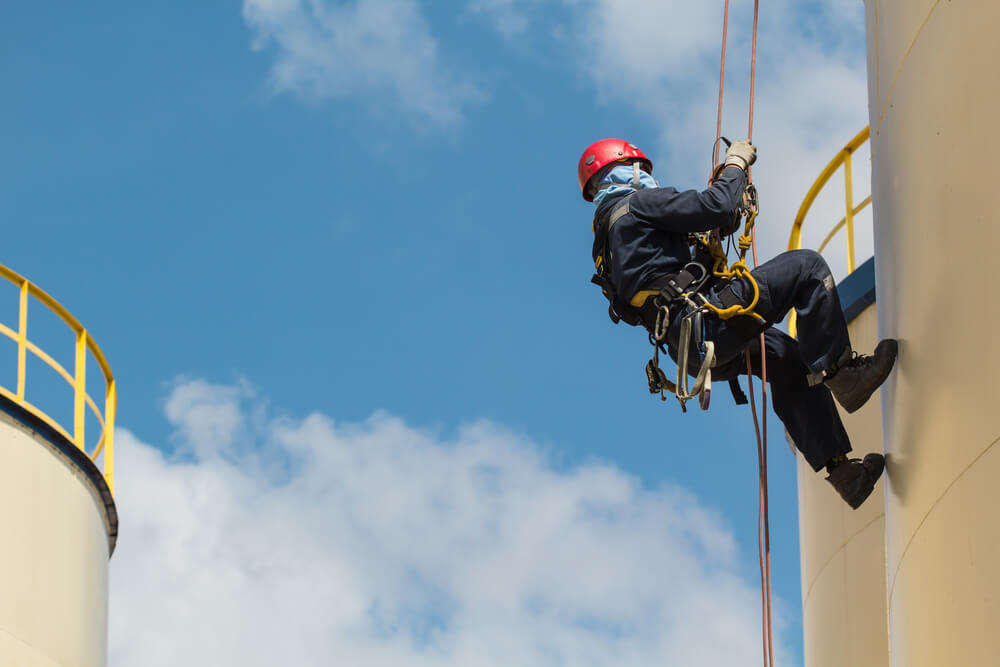
Fall Prevention And Protection
The Fall Prevention and Protection segment in the Working at Heights Training Course emphasizes workplace safety through effective fall prevention measures and protection techniques, aligning with the guidelines of WorkplaceNL and relevant standards in Kenora.
By incorporating comprehensive risk assessment procedures, trainees gain insightful knowledge on identifying potential fall hazards in different work environments, creating a safer workplace for themselves and their colleagues.
The course delves into the proper selection and usage of personal protective equipment (PPE) and fall arrest systems, equipping participants with practical skills essential in mitigating fall-related risks.
The training program emphasizes the significance of adherence to safety regulations and codes specific to Kenora, fostering a culture of compliance and proactive hazard management within the local industry.
By addressing site-specific considerations, such as varying weather conditions and terrain, the course ensures that participants grasp the nuances and relevance of fall prevention strategies in the regional context.
Proper Use Of Personal Protective Equipment (PPE)
The module covering the Proper Use of Personal Protective Equipment (PPE) in the Working at Heights Training Course educates participants on the correct application and compliance with safety gear regulations, in line with the standards endorsed by Immigration guidelines.
This module emphasizes the essential features of PPE and how they contribute to the overall safety of workers at heights. It covers the selection, inspection, and maintenance of PPE, ensuring that participants understand the significance of using appropriate equipment.
The course also delves into the specific requirements outlined in Immigration guidelines, addressing the importance of aligning with these regulations to ensure a safe and secure work environment. It provides practical insights into how the proper use of PPE can mitigate potential hazards and accidents, thereby promoting a culture of safety and compliance.
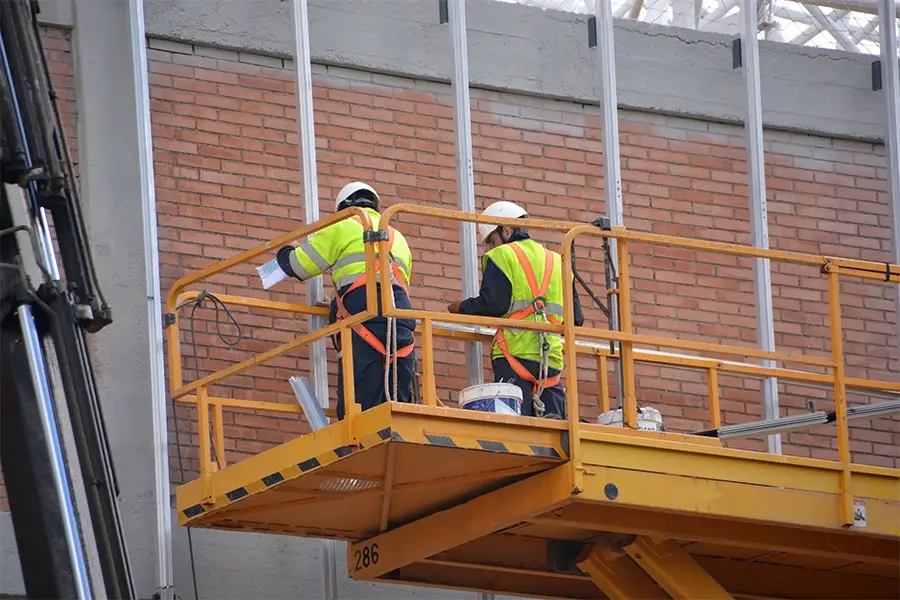
Emergency Procedures And Rescue Techniques
The Emergency Procedures and Rescue Techniques section in the Working at Heights Training Course covers essential safety protocols, emergency response, and rescue methodologies, aligning with the directives provided by Training Skills Development and pertinent standards in Timmins.
Participants are equipped with in-depth knowledge on identifying and responding to emergency situations that may occur while working at heights. They learn about harness application, fall arrest systems, and suspension trauma, ensuring comprehensive preparation for potential rescue scenarios.
The course emphasizes the importance of compliance with industry-specific safety standards and regulations, providing practical insight into the implementation of effective emergency procedures.
What Are The Different Types Of Working At Heights Training Courses?
Working at Heights Training Courses are tailored to address specific industry requirements, offering options such as the general course applicable to diverse settings, industry-specific courses for construction, and specialized training for industrial workplaces, as endorsed by CCOHS.
These training programs are designed to equip workers with the necessary skills and knowledge to work safely at elevated heights, reducing the risk of accidents and injuries.
The general course covers fundamental principles of working at heights and the proper use of safety equipment, making it suitable for a wide range of professions. For the construction industry, specialized courses focus on scaffolding, fall protection systems, and relevant regulations to ensure compliance and safety on construction sites.
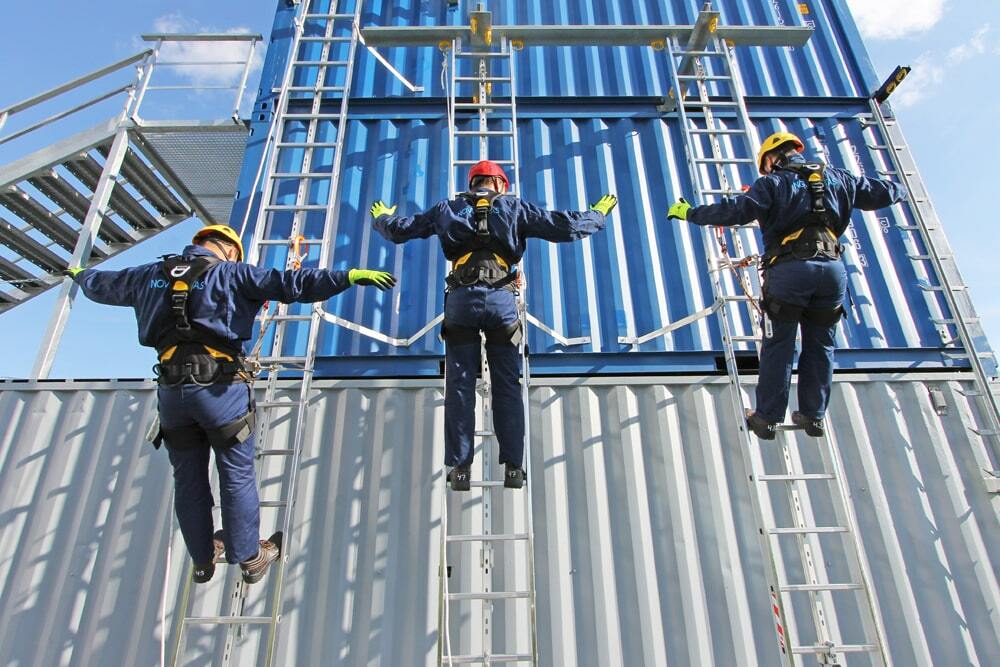
General Working At Heights Training Course
The General Working At Heights Training Course offers comprehensive safety training applicable to various work environments in Ontario, including the urban landscape of Toronto, to mitigate risks associated with elevated tasks.
Employees who enroll in the course gain practical knowledge and skills to execute tasks safely and efficiently while working at heights.
The course covers a wide range of scenarios, from construction sites to industrial facilities, ensuring that workers are prepared to handle the unique challenges of their specific work environment.
Considering the densely populated urban areas like Toronto, where tall buildings and infrastructure abound, the relevance of this training cannot be overstated. With Toronto being a hub of construction activities, equipping workers with the essential knowledge to navigate aerial tasks safely is a crucial step in ensuring their well-being and productivity.
The General Working At Heights Training Course is especially vital for workers in Toronto, given the city’s dynamic urban landscape and the nature of work carried out in the city’s numerous high-rise buildings and infrastructure projects. This course becomes an invaluable investment in the safety and protection of workers as they carry out their duties amidst the urban expanse of Toronto.
Construction Industry Specific Working At Heights Training Course
The Construction Industry Specific Working At Heights Training Course provides specialized training tailored to address the unique safety requirements of construction environments, catering to locations such as Barrie and London.
Construction work presents unique hazards and challenges, making specialized training necessary. This goes beyond general safety training and focuses on the specific risks encountered in construction settings. In locations like Barrie and London, where construction activities are prevalent, comprehensive and targeted working at heights training is crucial for worker safety and compliance with industry regulations.
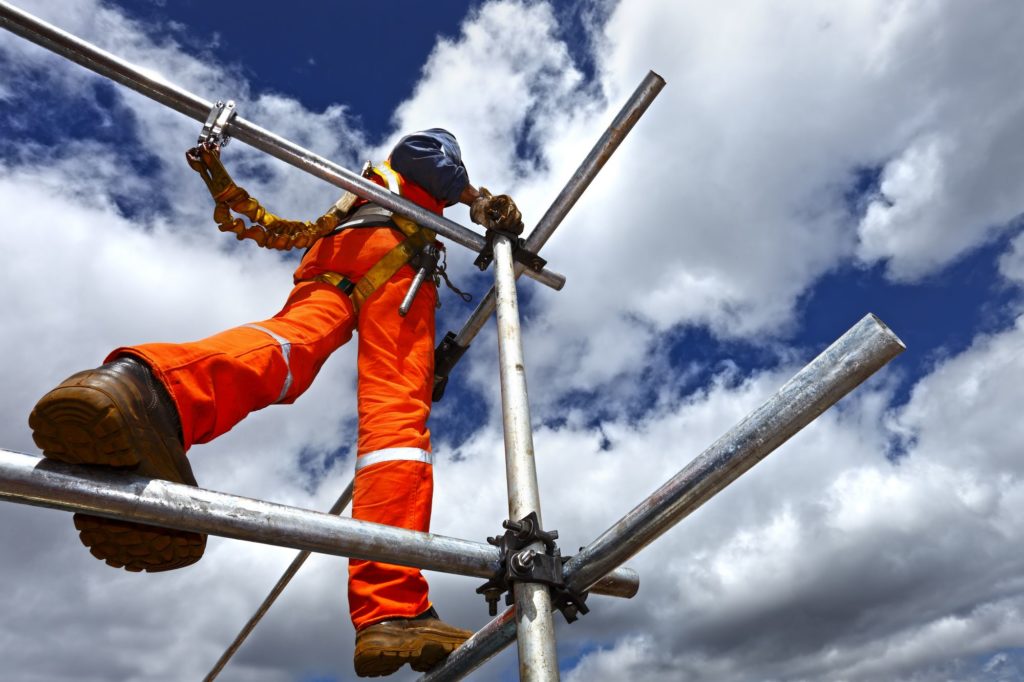
Industrial Workplace Specific Working At Heights Training Course
The Industrial Workplace Specific Working At Heights Training Course concentrates on safety procedures and protocols relevant to industrial settings, catering to the needs of workplaces in Ottawa, Thunder Bay, and similar regions.
Employees in these industrial environments are often exposed to potential working at heights risks, making this specialized training essential for minimizing accidents and ensuring compliance with safety regulations.
The course covers a wide range of topics, including hazard identification, fall protection systems, equipment inspection, and emergency response planning, all tailored to the specific challenges faced in industrial settings.
The training program places a strong emphasis on practical hands-on exercises and scenario-based simulations to equip participants with the necessary skills and confidence to handle height-related tasks safely and efficiently.
What Are The Benefits Of Attending A Working At Heights Training Course?
Attending a Working at Heights Training Course offers numerous benefits, including improved safety measures, legal compliance, and skill development, catering to locations such as Chatham, Dryden, and Kirkland Lake.
The training equips individuals with the knowledge and techniques required to work safely at elevated heights, reducing the risk of accidents and injuries. It ensures that businesses meet the legal requirements for employee training, thus avoiding potential fines and legal issues.
This course enhances an individual’s skills and confidence in handling heights-related tasks, thereby contributing to their personal and professional growth. In areas such as Chatham, Dryden, and Kirkland Lake, where such training programs are crucial due to prevalent construction and industrial activities, attending a Working at Heights Training Course becomes critical for fostering a safer and more skilled workforce.
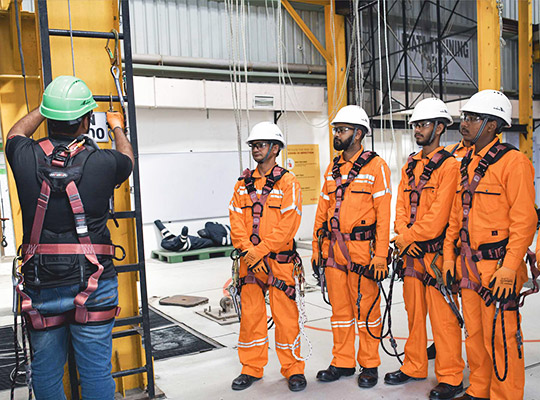
Improves Safety And Reduces Accidents
The Working at Heights Training Course facilitates safety improvement, effectively reducing accidents and mitigating risks, with notable relevance to locations such as Renfrew and Belleville.
This course equips workers with the knowledge and practical skills to recognize and control hazards associated with working at heights. By understanding fall protection systems, hazard identification, and emergency response procedures, participants can significantly minimize the likelihood of accidents.
This training also emphasizes the importance of adherence to safety protocols and the proper use of equipment, which is essential not only in Renfrew and Belleville but also in any environment where working at heights is a factor. With its comprehensive approach, the course plays a vital role in mitigating risks and promoting a safer working environment.
Increases Knowledge And Skills
Participating in a Working at Heights Training Course enhances knowledge, fosters skill development, and promotes safety training, offering tangible benefits to individuals in Welland, Cambridge, and similar areas.
Individuals who undergo this course gain a deep understanding of the regulations and best practices, enabling them to identify and mitigate potential hazards when working at elevated heights.
This knowledge not only enhances their proficiency but also contributes to a safer work environment.
The course equips participants with practical skills such as proper harness usage, ladder safety, and risk assessment, honing their ability to execute tasks with precision and caution.
Meets Legal Requirements
Attending a Working at Heights Training Course fulfills the legal requirements set by Ontario regulations, ensuring compliance and adherence to safety standards in locations such as London and Ottawa.
By completing this course, individuals obtain the necessary knowledge and skills to safely work at elevated heights while meeting legal obligations. The training covers essential topics such as hazard identification, fall protection systems, and rescue procedures, all of which are integral to complying with Ontario’s safety regulations.
In locations like London and Ottawa, where construction and maintenance activities often involve working at heights, ensuring that workers have undergone this specialized training is crucial for legal compliance and workplace safety. It also demonstrates the commitment of employers to prioritize the well-being of their employees.
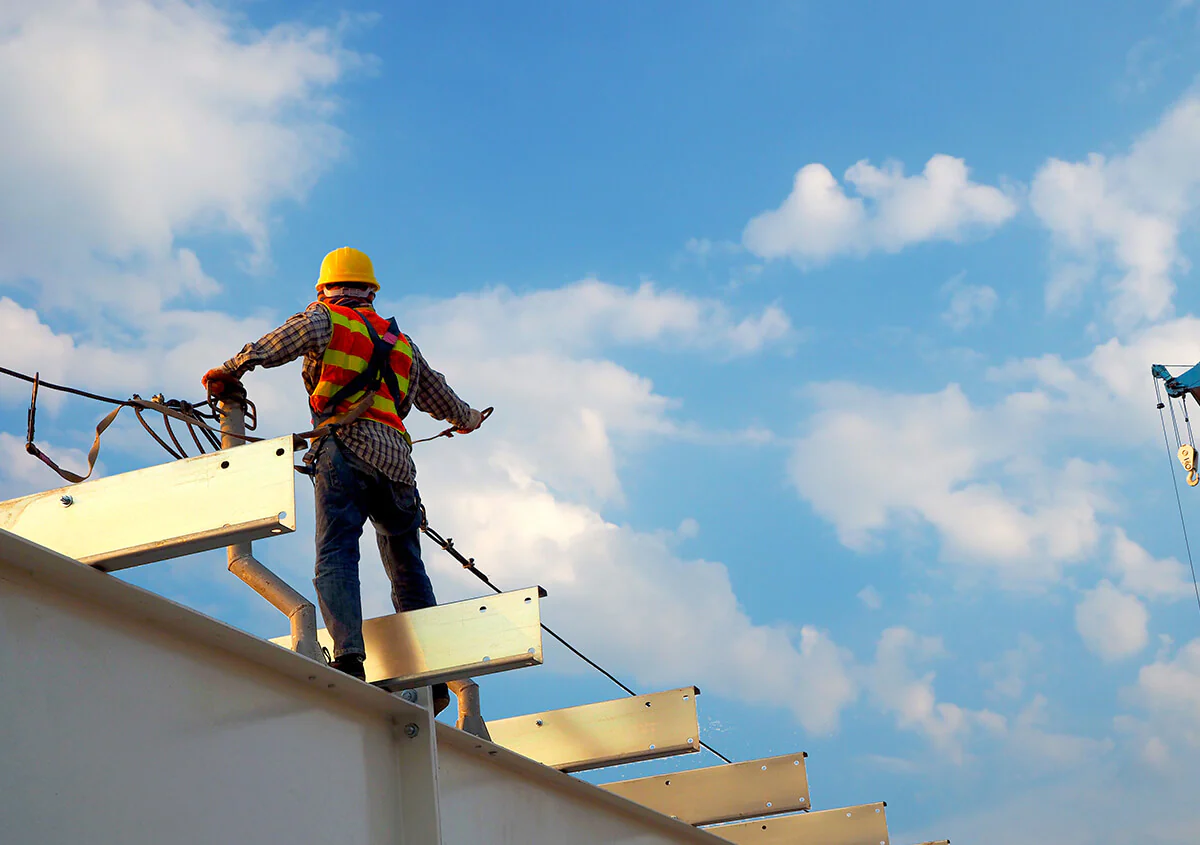
Boosts Confidence And Morale
Participation in a Working at Heights Training Course enhances confidence, boosts morale, and fosters a culture of workplace safety, particularly beneficial for individuals in Sault Ste. Marie, Peterborough, and similar environments.
Individuals who enroll in the Working at Heights Training Course gain the necessary skills and knowledge to navigate elevated work environments with confidence and assurance.
This comprehensive training equips them with the understanding of safety protocols, hazard identification, and risk mitigation strategies. The impact of this course extends beyond personal growth, as it influences a positive shift in workplace culture, encouraging peers and colleagues to prioritize safety.
By mastering the principles of fall prevention and protection, individuals in demanding work environments, such as Sault Ste. Marie and Peterborough, can contribute to the overall well-being of their teams.
How Long Does A Working At Heights Training Course Last?
The duration of a Working at Heights Training Course typically varies, with options for shorter sessions in Pembroke and comprehensive programs in Sault Ste. Marie, catering to diverse preferences and scheduling needs.
Working at Heights Training Courses are designed to provide participants with the essential knowledge and skills to safely work at elevated heights.
The shorter sessions in Pembroke offer the flexibility for individuals with tight schedules, enabling them to acquire the necessary certification efficiently.
On the other hand, the comprehensive programs in Sault Ste. Marie delve deeper into the regulations, hazard recognition, and practical techniques, ensuring a thorough understanding of working at heights safety.
Whether it’s the condensed sessions in Pembroke or the extensive curriculum in Sault Ste. Marie, both options prioritize the safety and well-being of the participants.
Frequently Asked Questions (FAQs)
What is a Working at Heights Training Course?
A Working at Heights Training Course is a specialized training program designed to educate individuals on how to safely work at elevated heights. It covers topics such as identifying hazards, using fall protection equipment, and emergency procedures.
Who should take a Working at Heights Training Course?
Anyone who works at elevated heights, such as construction workers, roofers, and window cleaners, should take a Working at Heights Training Course. It is a legal requirement in many industries to ensure the safety of workers.
How long does a Working at Heights Training Course last?
The duration of a Working at Heights Training Course can vary, but it typically lasts between 4-8 hours. The length of the course may depend on the specific training provider and the level of certification being offered.
Is the Working at Heights Training Course mandatory?
In many industries, it is a legal requirement for workers to undergo a Working at Heights Training Course. Employers have a responsibility to ensure the safety of their employees, and providing this training is one way to fulfill that obligation.
What are the benefits of taking a Working at Heights Training Course?
Taking a Working at Heights Training Course can have numerous benefits, including reducing the risk of accidents and injuries, improving workplace safety, and meeting legal requirements. It can also enhance an individual’s skills and knowledge, making them more employable. You can learn more about Alternative Safety Solutions working at heights training here:
https://alternativesafetysolutions.ca/courses/working-at-heights/
Is there a refresher course for Working at Heights Training?
Yes, a refresher course for Working at Heights Training is recommended every 3 years. This ensures that individuals are up to date on any changes in regulations or equipment and can continue to work safely at elevated heights.
